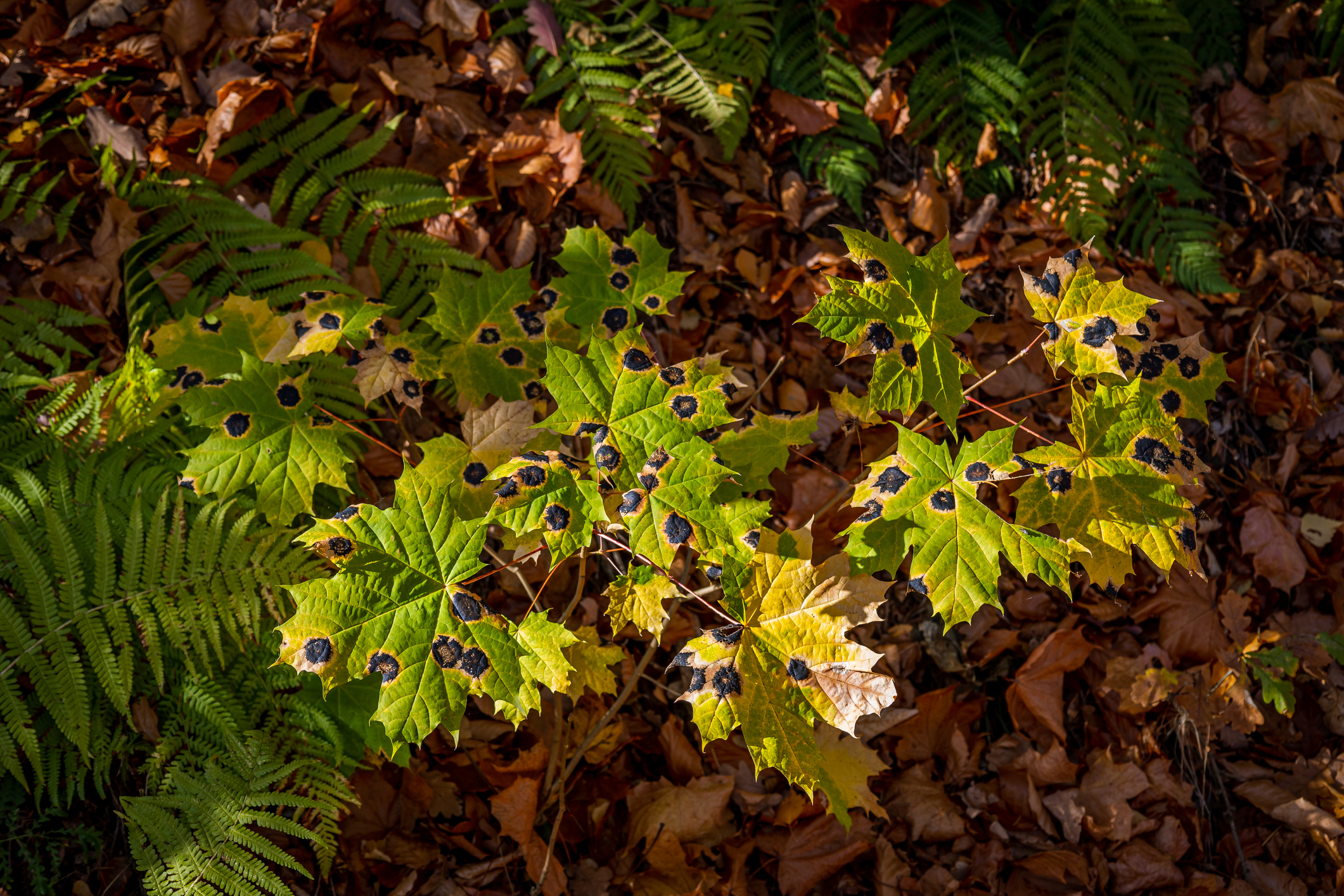Maple trees are a beautiful and iconic addition to any landscape, but they are also susceptible to a variety of diseases that can harm their health and appearance. As a maple tree owner, it’s essential to know how to spot and treat diseases of maple trees to ensure their longevity and beauty. In this blog post, we’ll go over some of the most common diseases of maple trees, how to identify them, and what steps you can take to treat and prevent them.
Anthracnose
Anthracnose is a fungal disease that affects many tree species, including maple trees. It typically presents as brown or black spots on the leaves, which can eventually cause the leaves to wilt and drop prematurely. Anthracnose is most common in wet weather conditions, so it’s important to be vigilant during periods of heavy rain.
To treat anthracnose, prune infected branches and remove any fallen leaves or debris from around the tree. Fungicides can also be applied to prevent further spread of the disease. If caught early, anthracnose is usually treatable, and most maple trees can recover from the damage.
Verticillium Wilt
Verticillium wilt is a fungal disease that causes wilting, yellowing, and premature leaf drop in maple trees. The fungus infects the tree’s vascular system, which can cause long-term damage and eventual death. Verticillium wilt is most commonly spread through contaminated soil, so it’s important to take preventative measures to avoid spreading the disease.
There is no cure for verticillium wilt, but infected trees can be managed with proper care. Remove infected branches and prune the tree to improve airflow and reduce stress on the tree. Fertilize the tree regularly and ensure it receives adequate water and nutrients to promote healthy growth.
Tar Spot
Tar spot is a fungal disease that causes black, tar-like spots on the leaves of maple trees. While it may look unsightly, tar spot is usually not harmful to the tree’s overall health. However, severe infections can cause premature leaf drop, which can weaken the tree over time.
To treat tar spot, remove any infected leaves and debris from around the tree. Fungicides can also be applied to prevent further spread of the disease. Tar spot is generally not a severe issue and can be managed with proper care and maintenance.
Maple Decline
Maple decline is a complex disease that can affect several species of maple trees. It’s characterized by stunted growth, yellowing leaves, and premature leaf drop. The disease is caused by a combination of environmental factors, including drought, soil compaction, and nutrient deficiencies.
To treat maple decline, focus on improving the tree’s overall health and environment. Ensure the tree receives adequate water and nutrients, and improve soil quality by aerating and fertilizing. Pruning can also help improve airflow and reduce stress on the tree. However, severe cases of maple decline may require the removal of the tree to prevent further spread of the disease.
Canker
Canker is a fungal disease that causes sunken, discolored patches on the bark of maple trees. It can weaken the tree’s structure over time and make it more susceptible to other diseases and pests. Canker is most commonly caused by environmental stressors, such as drought or extreme temperatures.
To treat canker, prune infected branches and remove any dead or decaying wood from around the tree. Fungicides can also be applied to prevent further spread of the disease. However, if the canker has spread extensively, it may be necessary to remove the tree to prevent further damage.
Turn to Excel Tree Care for Professional Evaluation
 Taking care of your trees in the spring can help promote healthy growth, prevent diseases, and keep them looking their best. By following these tips, you can ensure that your trees are well cared for and will continue to provide you with beauty and shade for years to come.
Taking care of your trees in the spring can help promote healthy growth, prevent diseases, and keep them looking their best. By following these tips, you can ensure that your trees are well cared for and will continue to provide you with beauty and shade for years to come.
Here at Excel Tree Care, we can perform everything from tree inspections and expert pruning to limb or whole-tree removal to protect your home and property. We offer free evaluations all around North Metro Atlanta as well as emergency tree removal 24 hours a day and seven days a week! Get in touch with the Excel Tree Care team at (404) 964-6508 or by contacting us online.

